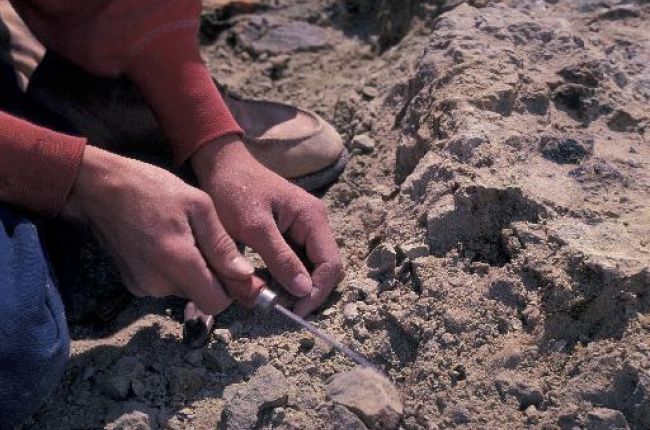
Paleontologists want to know the history of evolution and extinction of fossil species through geologic time. To do that, they try to study all of the fossils that have been preserved in sedimentary rocks. That's called the fossil record. Paleontologists have been collecting fossils from sedimentary rock layers around the world for over two hundred years. Their goal is to figure out the succession of species through all of geologic time. Once that succession is known, it serves as a scale of geologic time. Then, if you find a particular fossil in a rock, you know where that rock fits into the geologic time scale.
There's a big problem in figuring out the succession of species through geologic time. You don't know beforehand what the succession of species is! All you have are many stacks of sedimentary rocks (called stratigraphic sections) around the world to look at. No single stack spans all of geologic time, and no single stack has nearly all of the species that ever lived. You have to compare all of the stacks against one another to get the best approximation to the real succession. Paleontologists are still refining their ideas about the succession, as new fossils are found.

© Bruce Molnia, Terra Photographics
Matching up stratigraphic sections from around the world can be very difficult. If there were no fossils and you could only use the characteristics of the rock layers it would be even harder! This is because at any given time, very different types of sediments can be deposited in different places. It is these sediments that will eventually become the sedimentary rock layers making up the stratigraphic sections. At any given time, mud may be slowly collecting in some places while in other places sand is piling up rapidly. In other places, maybe there is nothing collecting at all! So you see, very different looking rock layers may mark the same time interval in different stratigraphic sections! The process of matching up equivalent "time layers" of rocks in different places is called stratigraphic correlation. One of the best (and oldest) tools for correlating strata around the world is the use of special fossils called index fossils.
Index fossils of organisms have two important characteristics. First, they must have been widely distributed around the world. Second, they must have only existed for relatively short periods of geologic time before becoming extinct. Consider a fossil of an organism that only lived in one place, or that existed for very long periods of geologic time. It would be of little use in matching up layers of rock that were deposited far from one another over the same limited span of time.





